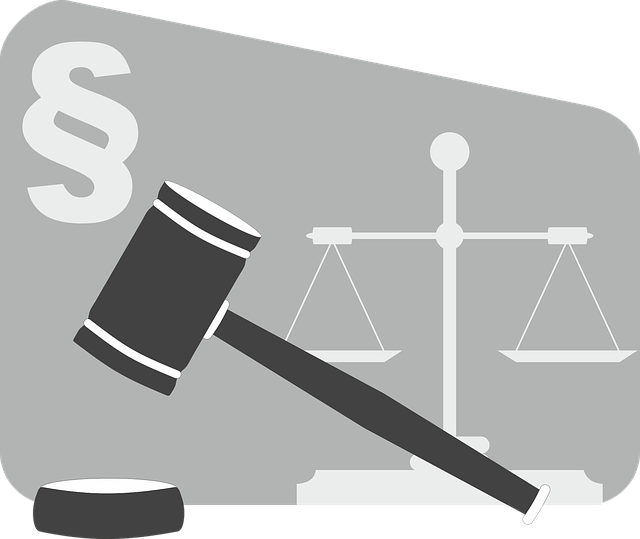Financial fraud detection relies on forensic accountants and digital forensics to uncover anomalies. As fraudsters evolve methods, challenging forensic evidence in court is vital. This involves cross-examining experts, critically analyzing methodologies, and presenting alternative interpretations to ensure justice without indicting innocent parties. Effective evidence preservation strategies are crucial, as are deep understandings of data analysis techniques for successful challenges in high-stakes trials. Lawyers must navigate complex data and methodologies to protect client rights and achieve favorable outcomes.
Financial fraud is a global concern, with sophisticated schemes constantly evolving. This article delves into the critical aspects of financial fraud detection, offering a comprehensive guide for professionals. We explore common fraudulent schemes, highlighting the pivotal role of digital forensics in identifying and recovering evidence. Learn effective strategies for data collection and preservation, as well as advanced analytical techniques to uncover hidden patterns and anomalies. Finally, discover best practices for presenting forensic evidence in court, including tips on how to challenge it effectively.
- Understanding Financial Fraud Schemes
- Role of Digital Forensics in Detection
- Collecting and Preserving Evidence
- Analyzing Data for Patterns and Anomalies
- Presenting Forensic Evidence Effectively in Court
Understanding Financial Fraud Schemes
Understanding Financial Fraud Schemes is a complex task given their sophisticated and ever-evolving nature. From phishing scams to complex Ponzi schemes, white collar and economic crimes can be hard to detect and even harder to prove in court. Forensic accountants play a pivotal role in identifying anomalies and gathering evidence that can stand up in jury trials. They meticulously analyze financial records, transaction patterns, and account activities looking for red flags that could indicate fraudulent activity.
By employing advanced data analytics and forensic tools, these professionals can isolate suspicious behaviors and present compelling evidence to law enforcement agencies. However, as fraudsters become more adept at masking their tracks, it’s crucial to understand how to challenge forensic evidence in court. This involves rigorous cross-examination of experts, scrutinizing the methodology used, and presenting alternative interpretations that could avoid indictment for non-culpable parties while ensuring justice is served for genuine offenders.
Role of Digital Forensics in Detection
Digital forensics plays a pivotal role in financial fraud detection, transforming the way investigators uncover and prosecute illegal activities. By employing advanced techniques to analyze digital data, forensic experts can extract crucial evidence from complex systems and networks. This involves tracing financial transactions, examining digital footprints, and recovering deleted or hidden information. With the increasing sophistication of fraudulent schemes, digital forensics offers a robust toolkit to combat these crimes effectively.
In high-stakes cases where millions are at stake, the ability to challenge forensic evidence in court becomes critical. Skilled defense attorneys can scrutinize the methodology and integrity of digital forensics to avoid indictment or secure winning challenging defense verdicts. Understanding the nuances of how this evidence is collected, stored, and presented is essential in navigating complex legal battles, ensuring that justice is served without compromising the sanctity of forensic data.
Collecting and Preserving Evidence
In the intricate dance of financial fraud detection, collecting and preserving evidence is a delicate process that demands meticulous attention. It’s not just about uncovering the facts; it’s about ensuring those facts remain untainted for presentation in court. This involves a strategic approach to data gathering, from digital forensics experts meticulously sifting through electronic records to auditors poring over financial statements. The goal is to gather irrefutable evidence that can stand up to scrutiny, especially when challenging forensic evidence in court.
Effective preservation strategies are crucial, as they safeguard the integrity of the evidence throughout its journey from investigation to courtroom. This includes secure storage methods, detailed documentation, and adherence to legal protocols designed to maintain the evidentiary value of digital artifacts and financial records. In a world where fraudsters employ sophisticated methods across the country, general criminal defense attorneys rely on robust evidence preservation practices to ensure their clients receive a fair trial, with how to challenge forensic evidence in court at the forefront of their strategies.
Analyzing Data for Patterns and Anomalies
In the intricate dance of financial fraud detection, analyzing data for patterns and anomalies stands as a cornerstone strategy. Advanced analytics tools enable investigators to sift through vast datasets, uncovering hidden trends that might otherwise remain concealed. By identifying unusual transactions, sudden changes in spending behavior, or suspicious account activities, these techniques play a pivotal role in building solid cases. For instance, machine learning algorithms can detect fraudulent patterns by learning from historical data, enhancing the accuracy of fraud identification and helping to prepare compelling evidence for court.
Understanding how to challenge forensic evidence in court is crucial, especially in high-stakes cases where the stakes are high for both accusers and defendants. Skilled legal professionals must be adept at examining data interpretations, questioning analytical methods, and presenting alternative explanations. This meticulous approach can lead to a complete dismissal of all charges, ensuring justice is served without undue convictions based on flawed analyses.
Presenting Forensic Evidence Effectively in Court
Presenting forensic evidence effectively is paramount in financial fraud detection cases, especially during high-stakes trials. It’s not merely about introducing technical details but ensuring the court understands complex data and methodologies. Lawyers must be adept at translating digital forensics findings into compelling narratives that resonate with judges and juries. This involves breaking down intricate processes into comprehensible parts and providing visual aids to support key points. For his clients, successful presentation means navigating all stages of the investigative and enforcement process, from gathering evidence to delivering persuasive arguments in court.
Knowing how to challenge forensic evidence is equally crucial. Defendants have the right to question the validity and reliability of digital forensics techniques and interpretations. Defense attorneys should scrutinize methodologies, data integrity, and potential biases. They must be prepared to raise doubts about the chain of custody, the expertise of analysts, and any software or hardware limitations. This strategic approach ensures a fair trial, protects his clients’ rights, and can lead to favorable outcomes in financial fraud cases.
Financial fraud detection is a complex process that requires a multi-faceted approach. By understanding common fraudulent schemes, leveraging digital forensics, and meticulously collecting and preserving evidence, investigators can uncover hidden patterns and anomalies. However, presenting this forensic evidence effectively in court remains paramount. Through strategic analysis and clear communication, professionals ensure the integrity of data, ultimately helping to challenge and defeat fraudulent activities while safeguarding the financial landscape.






